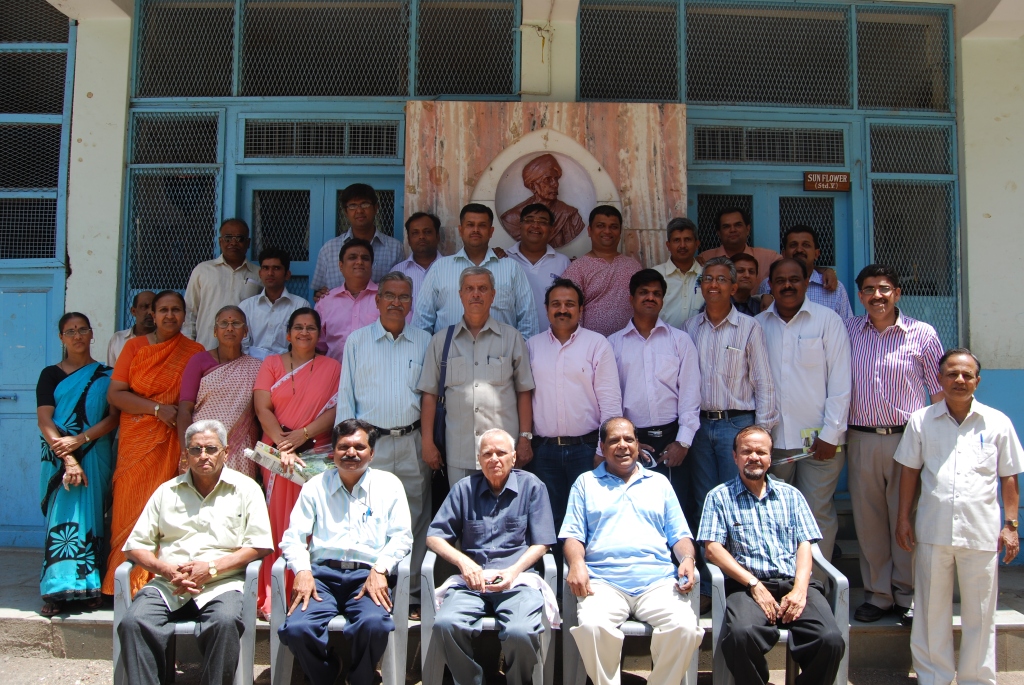Class of 1989
The boys (at least they were boys in 1989) descended onto Pune for three days during end-May. Its a momentous occasion. They are attending college after a gap of twenty years.
It is an impressive list.
• Prashant Atre (business head with Arets Graphics)
• Bhupesh Kumar Dang (pre-press operations, Times of India in Delhi)
• Sanjeev Popli (director of Popli Graphics)
• Nirmal Kanthode (DNA newspaper operations in Mumbai)
• Vinayak Khandekar (overseeing Times of India, Pune)
• Subodh Kulkarni (supply chain director at Tetrapak)
• Lalit Misri (director of Goodworks label printing)
• Aruni Mor (entrepreneur and trader in Nagpur)
• Anuj Pandey (owner of Himalaya Publishing)
• Sudhir Pardeshi (entrepreneur and property developer)
• P V Hanumanth Rao (quality assurance at Pragati Offset)
• Vijay Rao (business head of HT Media)
• Ravikanth (entrepreneur of flexo and gravure unit)
• B S Shesh (business head at HT Burda)
• Bala Shetty (with the Economist in Singapore)
• Nitin Wani (managing newspaper business with Kodak)
All of the above were the first batch to pass-out of the Pune Vidyarthi Griha(PVG) in 1989.
Training at PVG
Pune Vidhyarthi Griha which is more than a century old charitable organisation, initiated an education and training institute in 1929. The organisation established Maharashtra Institute of Printing Technology and started a three year diploma in printing engineering in 1978. Later in 1985, the organisation established COET, which is an affiliate to the University of Pune and accredited ‘A’ by NAAC.
Three days of bonhomie
Nitin Wani, a member of the visiting faculty at PVG – along with Pune-based Subodh Kulkarni and Vinayak Khandekar concept-ualised the reunion of the Class of 1989. Wani explains: “The purpose was two fold. One, to rekindle memories and meet our faculty, especially stalwarts like Prof P B Kulkarni. The second was to link PVG to the world of printing by analysing priorities and the requirements of our industry.”
On 29 May, the Class of 1989 checked into their hotels room at Prabhat Road. Most of “the students” were overwhelmed by the extraordinary meeting – and even the sullen weather did not deter them. Time passed. Everyone focused on the idea of carpe diem (Latin for ‘seize the day’). They exchanged notes, gossiped, networked. The bachelor’s party in the evening culminated with egg bhoorji at their student-day adda, at two in the morning. Prashant Atre smiles, “without consuming that egg bhoorji, our process of awakening wouldn’t have been complete.”
On 30 May, the Class of 1989 gathered in the old premises of Maharashtra Institute of Printing Technology. They congregated in their old classroom. Prof P B Kulkarni reminisced about the bygone days, he acted as a guide. Kulkarni reminded everyone , and the battle in court to gain the official stamp of approval from the university authorities. To that end, one by the one, the Class of 1989 spoke. Some of them, relive the good old days. Sanjeev Popli is thrilled that the librarian still recalls the day (9 August) he was admitted to college. Others experience severe bouts of self-consciousness, but are egged on by their classmates. Post lunch, the group reconvene at the plush PVG premises in Parvati Hills.

Class of 1989
After a brief bout of old videos (collated annual day functions and other moments of anarchy), there was an informal debate on the role of printing education in India. After 20 years, the Class of 1989 felt, the very meaning of training and education has changed; if only because of the work-force has been converted from one largely of unskilled labour to one of highly educated knowledge workers.
And this, is the paramount encumbrance with most institutes of printing technology. The students who graduate from it, are ill-prepared for the tremendous challenges that come upon them. They barely realise the capabilities – or incapabilities – of the technologies.
The evening of 30 May was a get together of sorts, followed by a quiet breakfast with Prof P B Kulkarni.
Reinvest in society
Before exiting, the Class of 1989 vowed to do a few things.
• Create a corpus fund
• Dedicate minimum two days to training
• Assist in student placements
• Aid in installation of relevant equipment
• Create a pressure group within the industry
The most important thing about an institute dedicated to the printing industry is in having a satisfied customer. Just as a result of a hospital is a healed patient. Similarly, the result of PVG is a student who has learned something and puts it to work ten and perhaps even twenty years later. For this to transpire, the PVG will have to enable the enterprise and each of the members in its faculty to grow and develop as needs and opportunities change. This means that training and development must be built into it on all levels – training and development that never stop.
PVG faculty consists of full-time and part-time professors. Three of them visited Drupa last year. In addition, Prof Sameer Prabhune trained for a month at the Heidelberg Print Academy in Germany.
Sanjeev Popli says: “The role played by PVG is crucial. It defines the future of the industry. If India intends to hold on to its status as the new print destination of the world, it is imperative that PVG produces the best of personnel for the future.” This is one of the endeavours of the Class of 1989.
-
Recent
-
Links
-
Archives
- July 2009 (1)
-
Categories
-
RSS
Entries RSS
Comments RSS